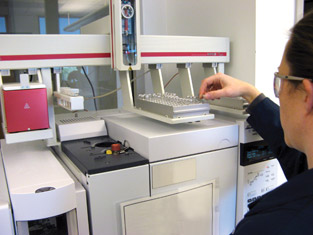
Extraction of Vegetable Oils and Fats from Fire Debris
A proposed new ASTM International standard will aid in fire investigation by facilitating the identification of vegetable oil or fat gathered from fire debris.
Subcommittee E30.01 on Criminalistics is developing WK34571, Test Method for the Extraction and Derivatization of Vegetable Oils and Fats from Fire Debris and Liquid Samples with Analysis by Gas Chromatography-Mass Spectrometry. The subcommittee is part of ASTM International Committee E30 on Forensic Sciences.
Fatty acids that are commonly present in oils and fats are not easily detected using gas chromatography–mass spectrometry, which is the most common analytical technique used by fire debris chemists. However, these acids can be easily converted to their corresponding methyl esters, which can be identified by GC-MS methods. WK34571 details the procedure for this conversion process.
"The development of this proposed standard has been based on the accumulated work of many individuals who refined and established validated analytical techniques to identify oils and fats using methyl esterification methods," says Ronald Kelly, Wyle Laboratories, and chairman of E30.01.
"A laboratory is often requested to examine items submitted from a fire scene to identify ignitable liquids or other chemical compounds that could have been used to ignite or fuel a fire," says Kelly. "In the case of oils and fats, there are many commercial products that contain saturated or unsaturated compounds with relatively low ignition temperatures or are capable of self-heating and auto-ignition of surrounding combustible materials. The identification of the class of oil or fat may assist the fire investigator in determining a conclusion about the cause of a fire."
All interested parties are invited to join in the standards developing activities of E30.
CONTACT Technical Information: Ronald L. Kelly, Wyle Laboratories • Indian Head, Md. • Phone: 703-232-6785 | ASTM Staff: Robert Morgan • Phone: 610-832-9732
 SN Home
SN Home Archive
Archive Advertisers
Advertisers Masthead
Masthead RateCard
RateCard Subscribe
Subscribe Email Editor
Email Editor